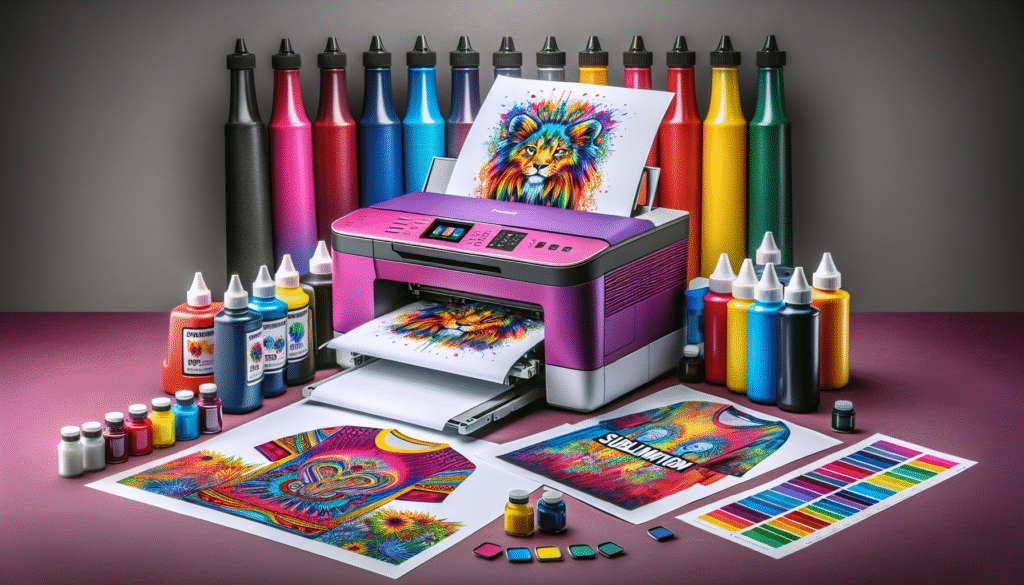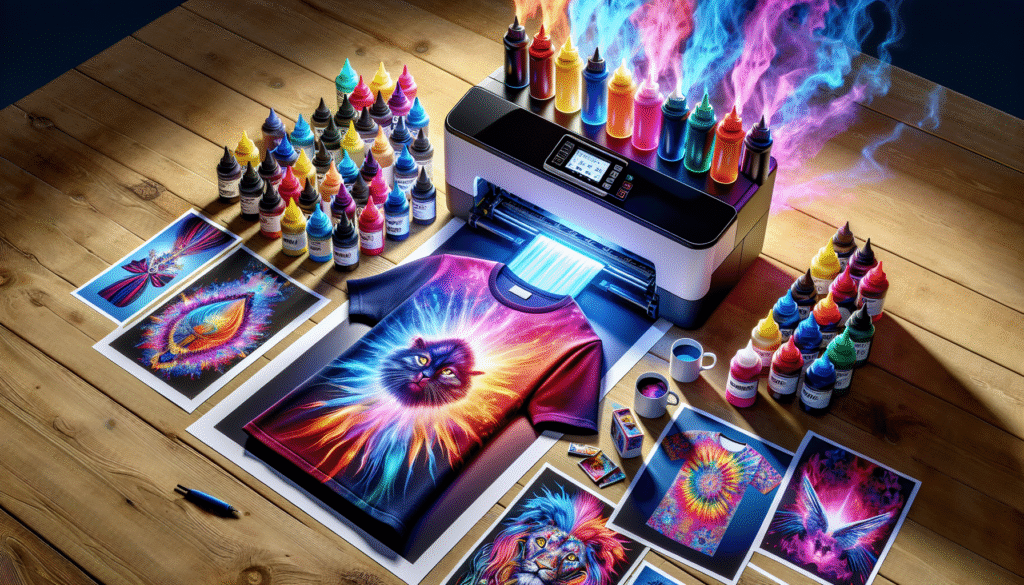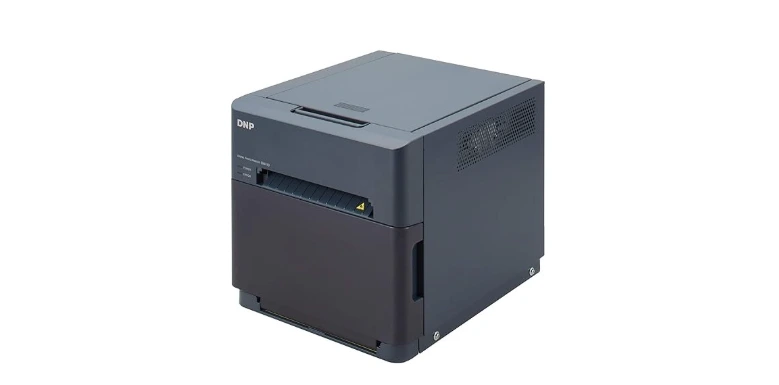Have you ever found yourself pondering over whether we can use our regular printers for sublimation? It’s a curious question, isn’t it? We’re here to unravel this enigma for you, untangling the threads of this intriguing topic with a friendly and comprehensive explanation.

What Is Sublimation Printing?
Before we embark on our exploration of the possibility of using regular printers for sublimation, it’s essential to understand what sublimation printing actually is. Sublimation printing is a popular method used to transfer designs or images onto various materials, often polyester fabrics or specially coated items. This process uses heat to drive dye directly into the substrate, resulting in vibrant, long-lasting prints that won’t crack or fade easily over time.
The Science Behind Sublimation
In the sublimation process, special sublimation inks are used, which can transform from a solid state into a gas without passing through a liquid state – a process scientifically known as sublimation. By applying heat and pressure, the sublimation ink is infused into the substrate’s surface, creating a permanent, resilient bond.
Can Regular Printers Be Used for Sublimation?
This is the crux of our inquiry, isn’t it? To answer it, we need to explore precisely what differentiates a “regular” printer from a sublimation printer. Regular printers typically use either inkjet or laser printing technology.
The Reality Check: Inkjet vs. Sublimation
Most standard inkjet printers use water-based inks designed for use on paper. However, the inks lack the chemical properties necessary for the sublimation process. Sublimation, on the other hand, requires specific thermal transfer inks that transition into gas under high heat. But what if we play the role of an adventurous hacker? Could we convert a regular inkjet printer into a rudimentary sublimation printer? The potential is there, provided we partake in some technical alchemy.
Potential Printer Models for Conversion
Converting a regular printer for sublimation isn’t entirely a myth. We can indeed transform certain inkjet printers, specifically those made by Epson, into sublimation printers. Epson printers are often used for conversion due to their piezoelectric print heads. Here’s a handy table to give us more insight:
| Brand | Models Suitable for Conversion |
|---|---|
| Epson | EcoTank Series, Workforce Series |

Printer Conversion: A Bridging Tale
Taking on a printer conversion isn’t for the faint-hearted. It involves careful preparation and execution. Before making the transformative leap, consider certain essential factors and understand the potential pitfalls and rewards inherent in this brave undertaking.
The Conversion Process
To embark on converting an Epson printer into a sublimation printer, we need to follow these essential steps:
-
Choose an Appropriate Printer Model:
- As previously mentioned, Epson EcoTank or Workforce models are suitable candidates because they use a piezoelectric print head, which is compatible with sublimation inks.
-
Acquire Sublimation Inks:
- We need specialized sublimation inks appropriate for our chosen printer model. These inks are available through a variety of suppliers.
-
Clean the Printer:
- This step involves cleaning any water-based ink residue from the printer. Ensuring there are no lingering remnants of regular ink is crucial for the sublimation inks to function correctly.
-
Install and Test:
- Load the sublimation ink, run test prints, and adjust settings accordingly to ensure the colors and prints come out as expected.
The Importance of ICC Profiles
The role of ICC profiles in color management cannot be understated. These profiles help us ensure color accuracy when printing with sublimation inks, bridging the gap between our computer’s digital colors and the print’s physical colors.
Is It Worth Converting a Regular Printer for Sublimation?
An astute question, indeed. Before we decide, we must weigh the pros and cons of using a converted printer against investing in a dedicated sublimation printer.
Pros of Conversion
- Cost-Effective: Converting an existing printer can be cheaper than purchasing a new, dedicated sublimation printer.
- Sustainability: Repurposing an existing device diminishes waste and promotes environmental responsibility.
Cons of Conversion
- Time and Effort: The conversion process demands a significant investment of time and technical effort.
- Risk of Damage: Incorrect handling during conversion can irreparably damage the printer, rendering it unusable for any purpose.
- Limited Support: Warranty support may be voided post-conversion, and access to technical support could be limited.
The Alternative: Dedicated Sublimation Printers
For those wary of the technical intricacies and potential risks of conversion, investing in a standalone sublimation printer might be the more prudent choice. These printers are designed with sublimation in mind, often boasting features and precision settings for optimized output.
Benefits of Dedicated Sublimation Printers
- Optimal Performance: Specifically engineered for sublimation, these printers deliver superior quality and efficiency.
- Ease of Use: Minimal setup time, with color accuracy, built-in settings, and pre-installed ICC profiles.
- Technical Support: Manufacturers often provide extensive support and resources dedicated to troubleshooting and user guidance.
Sublimation Paper and Its Role in the Process
While we focus heavily on printers and inks, let us not overlook the medium through which our sublimated creations are born – the sublimation paper. Designed to hold and release the dyes efficiently, sublimation paper is a non-negotiable component of the process.
Choosing the Right Sublimation Paper
Several varieties of sublimation paper can adjust to our needs, ranging from light-weight options to heavier premium papers:
- Thin Sublimation Paper: Ideal for detailed work but may require precise handling.
- Thick Sublimation Paper: Offers robust durability but can constrain intricate designs, particularly for fine detail.
Factors Influencing Sublimation Outcomes
By understanding how various factors affect sublimation outcomes, we empower ourselves to optimize quality and satisfaction with each printed project.
Factors to Consider
- Material and Coating: Sublimation works best on polyester materials or specially coated surfaces permitting ink bonding.
- Temperature and Pressure: Precise control over heat press parameters ensures vivid colors and exact replication.
- Design Complexity: Highly intricate designs may require more meticulous planning and testing to achieve the desired result.
A Companion Table: Quick Reference Guide
Sometimes, having a concise guide at our fingertips can be invaluable. Here’s a nifty table that summarizes the whirlwind of considerations:
| Aspect | Regular Printer | Converted Printer | Dedicated Sublimation Printer |
|---|---|---|---|
| Cost | Typically lower | Moderate (after conversion) | Generally higher |
| Setup and Preparation | Minimal | Intensive | Minimal |
| Quality and Consistency | Standard | Variable (depends on conversion) | High |
| Warranty and Support | Full Support | Limited/Post-Conversion Warranty | Extensive/Substantial Support |
| Sublimation Ink Compatibility | Not Compatible | Compatible (After Conversion) | Fully Compatible |
Conclusion
We have journeyed through the intricacies of using regular printers for sublimation and acknowledged the feasibility of conversion. We’ve covered the skills, creativity, and determination that can guide us through this complex terrain. Whether we choose to convert an existing printer or invest in a dedicated sublimation device, understanding each nuance ensures our personal satisfaction and creativity while avoiding pitfalls.
In conclusion, the choice hinges on our confidence, desire for experimentation, and commitment to mastering the technical arts. Our quest for the ideal sublimation experience may present itself as an epic voyage or, if we prefer, an efficient solution with a dedicated printer. Which path shall we choose on the cusp of our sublimation adventure?

